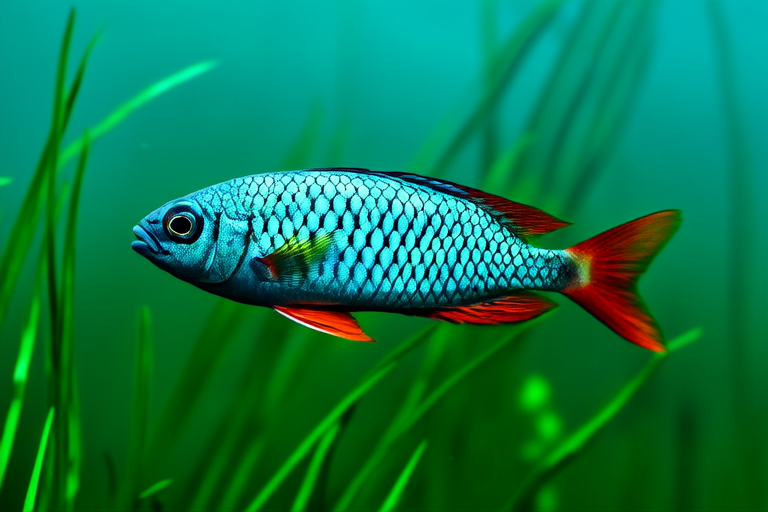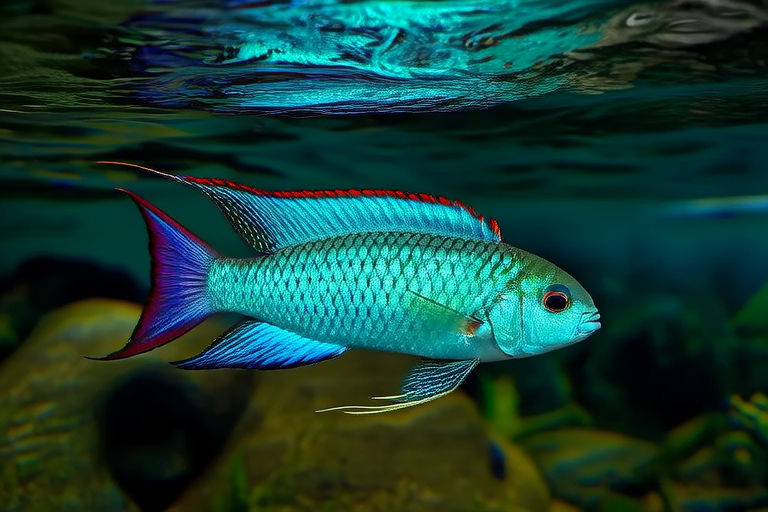
From Egg to Fin: Raising Rajah Cichlids for Beginners and Beyond
Welcome to the fascinating world of Rajah cichlids! These vibrant fish, native to the waters of Lake Malawi in East Africa, are known for their striking colors and intriguing behaviors. Rajah cichlids, scientifically named Aulonocara jacobfreibergi, are a popular choice among aquarium enthusiasts due to their captivating appearance and relatively manageable care requirements. This article will guide you through the basics of raising Rajah cichlids, from setting up your tank to nurturing their young, ensuring a rewarding experience for both novice and experienced aquarists.
The Origin and Appeal of Rajah Cichlids
Rajah cichlids hail from the rocky shores of Lake Malawi, where they thrive in the warm, alkaline waters. Their natural habitat is characterized by abundant rocks and caves, which provide shelter and spawning sites. In the wild, these fish display a variety of vibrant hues, ranging from electric blues to rich reds and oranges, making them visually stunning additions to any aquarium. Rajah cichlids are also appreciated for their active nature and territorial behavior, offering an engaging dynamic within the tank.
Setting Up Your Tank: Creating a Natural Habitat
To ensure your Rajah cichlids thrive, it’s crucial to replicate their natural environment as closely as possible. Begin by choosing an appropriately sized tank; a minimum of 55 gallons is recommended for a small group of Rajah cichlids. Larger tanks allow for more swimming space and reduce stress levels.
Water Parameters: Rajah cichlids prefer water that mimics their native lake conditions. Maintain a pH level between 7.8 and 8.6, with hardness (GH) around 10-15 dGH. Keep the temperature stable at approximately 75-82°F. Regular testing and monitoring of these parameters are essential to prevent health issues.
Filtration Systems: Efficient filtration is vital for maintaining water quality. Choose a filter that provides adequate biological, mechanical, and chemical filtration. Consider a canister or hang-on-back filter to handle the high bioload produced by these active fish. Regular maintenance of filters ensures optimal performance.
Suitable Decorations: Incorporate plenty of rocks and caves to mimic the natural habitat of Rajah cichlids. These structures serve as hiding spots and spawning sites, promoting a stress-free environment. Live plants, while beneficial, may not be suitable due to the cichlids’ tendency to uproot them. Instead, opt for robust, artificial plants that can withstand their energetic behavior.
Feeding Rajah Cichlids: Nutritional Requirements and Diet Options
Proper nutrition is key to keeping Rajah cichlids healthy and vibrant. These omnivorous fish require a balanced diet that includes both protein and plant matter. High-quality flake foods, pellets, and frozen or live foods such as bloodworms, brine shrimp, and daphnia are excellent choices. Feed your Rajah cichlids several times daily, offering only what they can consume within a few minutes to prevent overfeeding.
Dietary Considerations: Ensure a varied diet to meet all nutritional needs. Supplement their meals with algae wafers and spirulina-based foods to promote coloration and overall health. Limit the frequency of live foods to avoid introducing potential pathogens into the tank.
Breeding Rajah Cichlids: A Step-by-Step Guide
Breeding Rajah cichlids can be an enriching experience for dedicated aquarists. Start by selecting a compatible pair; males are typically larger and more colorful than females. Place the chosen pair in a separate breeding tank equipped with ample hiding spots and caves.
Spawning and Incubation: Once comfortable in their new environment, the pair will begin courtship rituals. The female will deposit eggs in a carefully selected cave, followed by the male fertilizing them. The female then guards the eggs until they hatch, usually within 3-4 days. After hatching, the fry remain attached to the substrate for several days before becoming free-swimming.
Raising Fry: Transfer the female and fry to a nursery tank to protect them from predation. Feed the fry infusoria or finely crushed flakes initially, gradually transitioning to larger food items as they grow. Monitor water quality closely during this sensitive period to ensure optimal conditions for growth.
Maintaining Water Quality and Addressing Health Issues
Consistent water changes and diligent monitoring are crucial for maintaining a healthy environment. Perform weekly partial water changes, removing about 20% of the water and replacing it with fresh, conditioned water. Regularly clean filters and decorations to prevent the buildup of harmful substances.
Common Health Issues: Rajah cichlids are generally hardy but can fall prey to diseases if environmental conditions deteriorate. Common ailments include ich, fin rot, and bacterial infections. Early detection and prompt treatment are essential for recovery. Quarantine any new fish before introducing them to the main tank to prevent the spread of diseases.
Tips for Advanced Care and Enrichment Activities
For advanced aquarists looking to enhance the well-being of their Rajah cichlids, consider incorporating enrichment activities. Provide toys and structures that encourage exploration and exercise, such as floating logs or interactive feeders. Rotate tank decorations periodically to stimulate curiosity and mental engagement.
Additionally, maintain a consistent feeding schedule and offer a diverse range of foods to support their physical and mental health. Regular observation of your Rajah cichlids can help identify behavioral changes that might indicate underlying issues, allowing for timely intervention.
In conclusion, raising Rajah cichlids offers a rewarding journey from egg to fin. By understanding their unique needs and providing a nurturing environment, you can ensure the longevity and vitality of these captivating fish. Whether you’re a novice or an experienced aquarist, the joy of watching Rajah cichlids thrive in your care is unparalleled.






